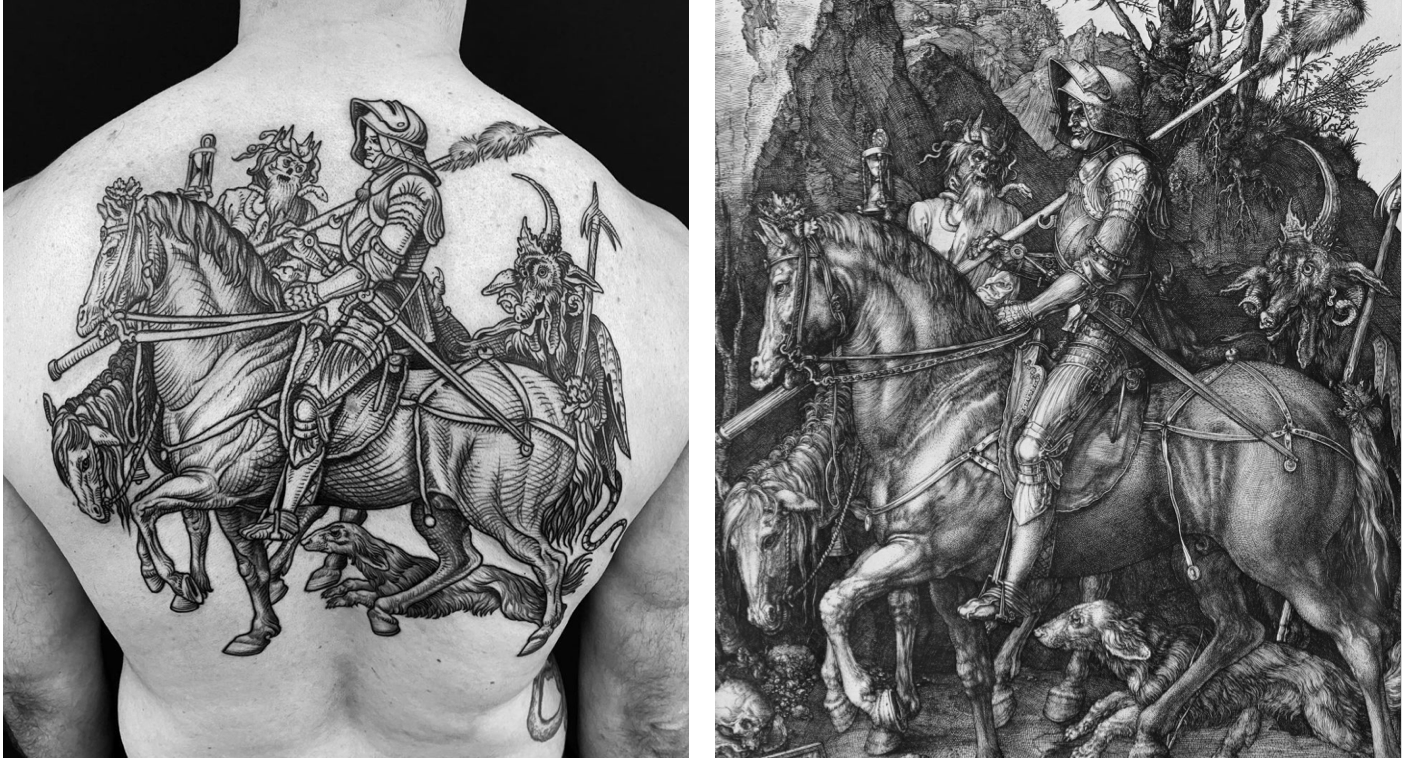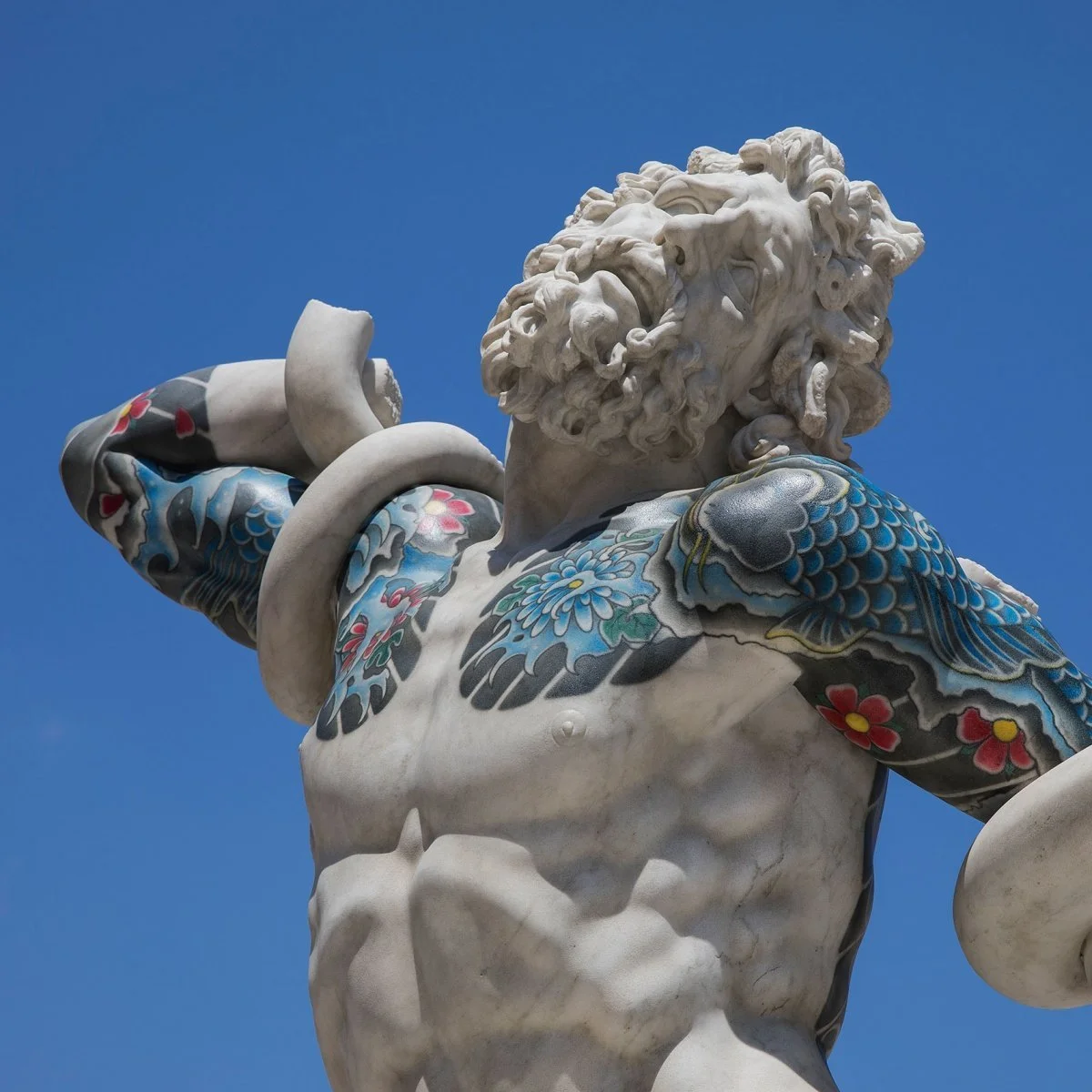The Art History of Tattoos
Toyohara Kunichika, The Kabuki Actors, 1868, woodblock print on paper, 3.7 x 2.5 cm, Art Gallery of South Australia, Adelaide (Image: MFA)
The exhibition ‘Tattoos in Japanese Prints’ at Museum of Fine Arts in Boston is in its final few weeks, and has emphasised the rich and varied cultural history of tattoos. Tattoos can divide opinion very easily, perhaps even more so than other artistic practices; since some people would argue that tattoos cannot be called ‘art’. In fact, there is firm evidence that tattooing was an ancient art form dating to back to around 3100 BC. Historically, tattoo motifs and designs have held specific significance for different cultures - and it remains true today. We may think of Maori facial tattoos (called Ta Moko) in New Zealand, or the Samoan pe’a, a tattoo for men usually from the waist to the knees. But tattooing, particularly in Western cultures, has become so mainstream that designs have an infinite range of styles, placements and motifs.
The MFA exhibition is one recent case that highlights how visual motifs, iconographies and styles of tattoos are firmly grounded in broader artistic and social contexts. In early 19th-century Edo (modern-day Tokyo), tattoo artists were inspired by colour woodblock prints (known as ukiyo-e), and the motifs they created remain hugely popular today in tattoo shops across the world. Printmakers like Utagawa Kuniyoshi were in turn inspired by tattoos. The MFA exhibition includes nearly 80 works by Kuniyoshi, in which he depicts heroic male figures covered in intricate tattoos, from lions, snakes and dragons, to peonies, waves and leaves.
Left: Maud Dardeau tattoo (Image: @mauddardeau) Right: Albrecht Dürer, Detail of The Knight, Death and the Devil, 1513, engraving, 24.5 x 19.1 cm, Met Museum, New York (Image: Met)
Left: Maud Dardeau tattoo (Image: @mauddardeau) Right: Pierre-Eugène-Émile Hébert, Et Toujours! Et Jamais!, 1863, bronze, 149.9 x 63.5 x 68.6 cm, Spencer Museum of Art, United States (Image: Google Arts & Culture)
Tattoos can also be inspired by works made hundreds of years ago. French tattoo artist Maud Dardeau, based in Bordeaux, regularly tattoos pre-modern engravings onto people’s bodies. These range from Albrecht Dürer’s The Knight, Death and the Devil (1513) across one customer’s back, to an engraving of Mercury after W.B. Richmond (1866) on another customer’s thigh. In other cases, Dardeau uses the style of engravings to create tattoos of pre-modern sculptures, such as the bronze sculpture Et Toujours! Et Jamais! by Pierre-Eugène-Émile Hébert in 1863 on a customer’s ribcage. It is interesting to note that, just as pre-modern engravers were employed to create prints of sculptures, here Dardeau continues to use the hatched lines of engravings to translate three-dimensional art into a two-dimensional drawing.
Fabio Viale, Laocoön, on display in his current exhibition In Between, Turin, extended until 13 Feb 2022 (Image: Yatzer)
The art of Italian contemporary sculptor Fabio Viale very consciously considers the connection between pre-modern sculpture and tattoos. Viale’s current exhibition in Turin showcases replicas of famous sculptures all adorned with tattoos. The replicas are created using a complex system of photogrammetry technology (created by Viale himself) and sculpting by hand; once complete, each one is given tattoos in a very similar way to that of human tattooing. The sculptures include Canova’s Cupid and Psyche, the Venus de Milo and the Laocoön. As a symbol of contemporary imagery, tattoos come to act as a visual bridge between classical art and modern standpoints: hence the exhibition’s title ‘In Between’. Perhaps this exhibition marks one instance, among many others, in which tattoos have entered the world of high-art… a fact that will surely continue to divide opinions.
Did you enjoy this article? Take our quiz to find out which pre-modern art inspired tattoo you would suit…
February 2022



